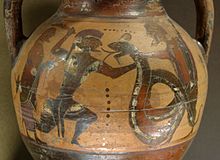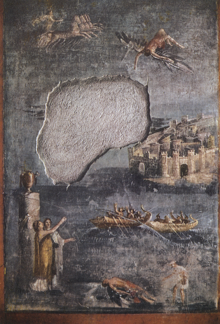The myth of Daedalus and Icarus is one of the most known and fascinating Greek Myths, as it consists of both historical and mythical details.
While in Crete Daedalus created the plan for the Minoan Palace of Knossos, one of the most important archaeological sites in Crete and Greece today. It was a magnificent architectural design and building, of 1,300 rooms, decorated with stunning frescoes and artifacts, saved until today. The sculpture of Ariadne in Knossos and many others in Elounda and Karia are also his.
King Minos and Daedalus had great understanding at first, but their relationships started deteriorating at some point; there are several versions explaining this sudden change, although the most common one is that Daedalus was the one who advised Princess Ariadne to give Theseus the thread that helped him come out from the infamous Labyrinth, after killing the Minotaur.
The Labyrinth was a maze built by Daedalus; King Minos wanted a building suitable to imprison the mythical monster Minotaur, and according to the myth, he used to imprison his enemies in the labyrinth, making sure that they would be killed by the monster.
Minos was infuriated when found out about the betrayal and imprisoned Daedalus and his son Icarus in the Labyrinth.
| Greek mythology |
|---|
 |
In Greek mythology, Daedalus (/ˈdɛdələs ˈdiːdələs ˈdeɪdələs/; Greek: Δαίδαλος; Latin: Daedalus; Etruscan: Taitale) was a skillful architect and craftsman, seen as a symbol of wisdom, knowledge and power. He is the father of Icarus, the uncle of Perdix, and possibly also the father of Iapyx. Among his most famous creations are the wooden cow for Pasiphaë, the Labyrinth for King Minos of Crete which imprisoned the Minotaur,
and wings that he and his son Icarus used to escape Crete. It was
during this escape that Icarus did not heed his father's warnings and
flew too close to the sun; the wax holding his wings together melted and
Icarus fell to his death.
In Greek mythology, Icarus (/ˈɪkərəs/; Ancient Greek: Ἴκαρος, romanized: Íkaros, pronounced [ǐːkaros]) was the son of the master craftsman Daedalus, the creator of the Labyrinth. Icarus and Daedalus attempt to escape from Crete by means of wings that Daedalus constructed from feathers and wax. Daedalus warns Icarus first of complacency and then of hubris, instructing him to fly neither too low nor too high, lest the sea's dampness clog his wings or the sun's heat melt them. Icarus ignores Daedalus’s instructions not to fly too close to the sun, causing the wax in his wings to melt. He tumbles out of the sky, falls into the sea, and drowns. The myth gave rise to the idiom "don't fly too close to the sun".


